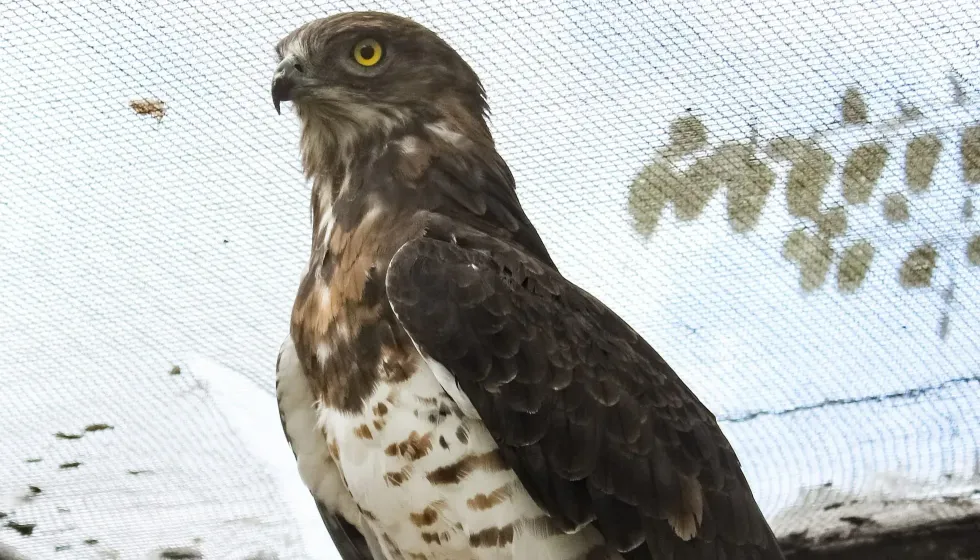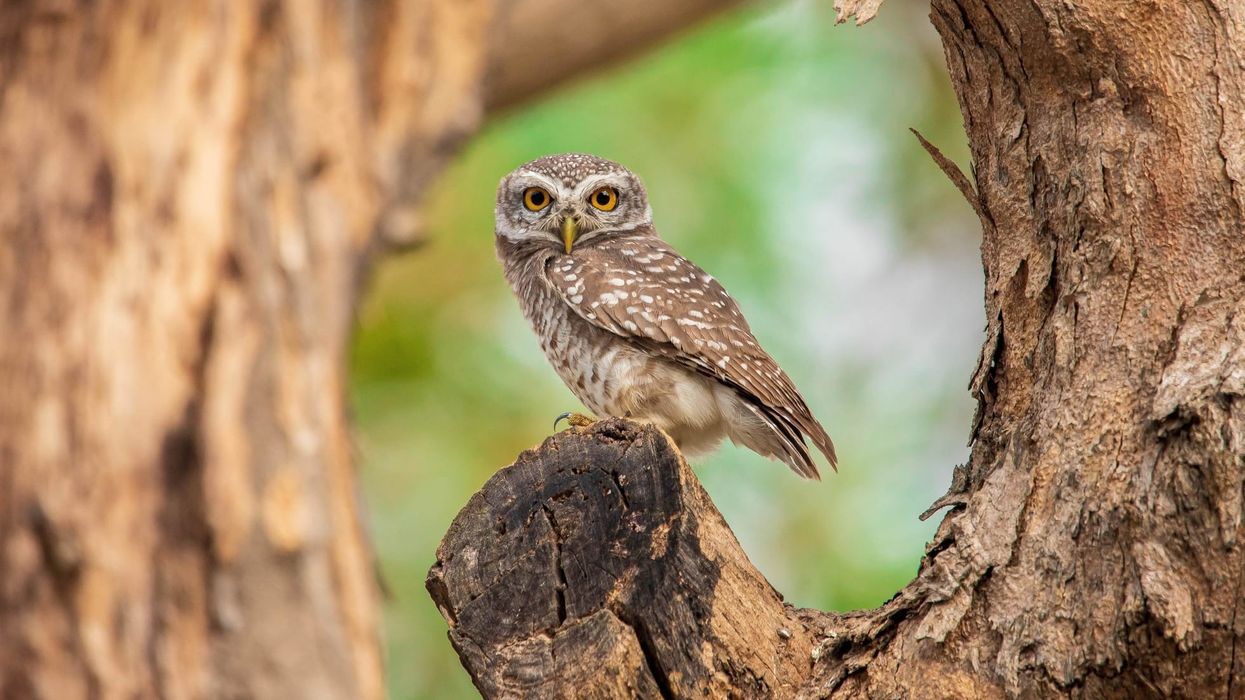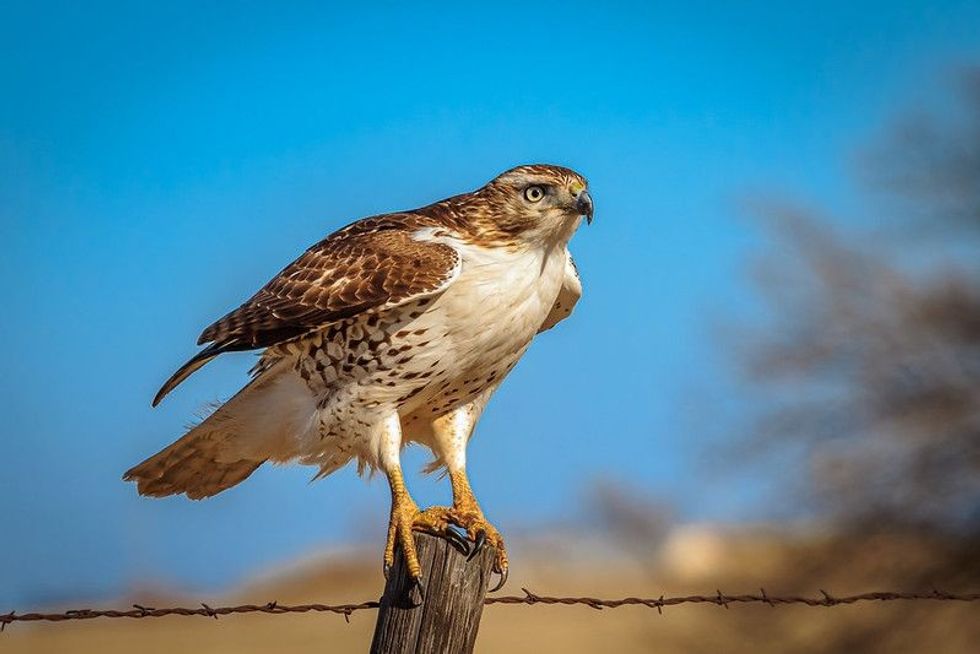The African cuckoo-hawk (Aviceda cuculoides) is a species of hawks belonging to the family Accipitridae. This is an uncommon species mostly found in savannahs, woodland, and forest habitats. The shape of this bird can be confused with many other raptor species.
These birds are similar to hawks as they are a part of the hawk species. However, they look less dangerous and cuter than other types of hawks. They can be found across the African continent, in specific regions.
They are also known as an African baza and their flying speed is quite slow compared to that of goshawks or sparrow hawks. This bird makes a long whistle to call its mates.
They love living in the wild and foraging foods including insects, lizards, snakes, grasshoppers, and so on. They are classified as a species of Least Concern since their population is stable for now.
To learn more about the cuckoo species of birds, you can also visit our cuckoo and yellow-billed cuckoo facts pages.
African Cuckoo-Hawk Interesting Facts
What type of animal is an African cuckoo-hawk?
The African cuckoo-hawk (Aviceda cuculoides) is species of raptor that is related to the falcon, as seen in the fact that they share some of features (like a notched bill). This species also resembles a kite and they are also known as cuckoo-falcons and bazas.
What class of animal does an African cuckoo-hawk belong to?
The African cuckoo-hawk belongs to class Aves and the phylum Chordata. These birds belong to the order Accipitriformes and are sometimes called the African baza.
How many African cuckoo-hawks are there in the world?
The total population of this bird across the world is currently unknown.
Where does an African cuckoo-hawk live?
These birds live in dense woodland and forest habitats, with their range also including gardens and savannas. Both sexes build the nest together when the mating season approaches. They place their nests on high branches to safeguard their little ones. Nests are usually built with twigs, dry leaves, and grass.
What is an African cuckoo-hawk's habitat?
They are a shy species of birds, and a typical African cuckoo-hawk habitat is found along the edges of evergreen forest regions and deciduous woodlands. They are mainly found in eastern parts of southern and sub-Saharan Africa. The African cuckoo-hawk range of distribution covers much of the African continent.
Who do African cuckoo-hawks live with?
This species of cuckoo hawk (Aviceda cuculoides) is normally solitary but they sometimes reside in small groups.
How long does an African cuckoo-hawk live?
Their life expectancy is currently unknown.
How do they reproduce?
The breeding season of this species occurs differently depending on its location. In South Africa it happens between September and March, in west Africa, it occurs from June to August, and in Kenya, it occurs following the onset of rain from March to February.
Female cuckoo-hawks lay their eggs in other birds' nests as they are parasitic and when the eggs hatch and the young birds grow a little, they push other chicks out of the nest.
What is their conservation status?
The population of this bird species is stable at the moment and their conservation status is currently Least Concern.
African Cuckoo-Hawk Fun Facts
What do African cuckoo-hawk look like?
The African cuckoo-hawk (Aviceda cuculoides) is a species of raptors that is found living in different parts of southern Africa. This bird is often confused with a raptor.
Males are blackish-brown in color, with a blackish crest and chest and, above that, a gray mantle. Their underparts have a white marking with chestnut marks.
Females are also brown in color with chestnut bars which are a little paler on their underparts. The tail is the same in both males and females, with three gray bars and a white tip. Their overall weight is around 7.7-10.4 oz (220-296 g), with a body length of 14.9-16.9 in (38-43 cm).
They have rounded narrow wings and a wingspan of between 33.46-37.4 in (85-95 cm). They resemble small raptors with their distinctive flight and females are often larger than males.

How cute are they?
This African baza bird somewhat looks like a falcon. They are small-to-medium-sized birds which makes them quite cute, but they are predators which make them quite dangerous. They are actually known to be quite scary birds.
How do they communicate?
These species of birds (raptors) make very loud sounds and loud whistles to call their mates in their groups. It is believed that the sound made by cuckoos is a sign of something special, perhaps that something good that is going to happen, maybe related to incoming money.
How big is an African cuckoo-hawk?
The African cuckoo-hawk's body length is around 14.9-16.9 in (38-43 cm), which is seven times bigger than the length of a belted kingfisher.
How fast can an African cuckoo-hawk fly?
The top speed of this species is not very fast. Especially if compared to goshawks or sparrow hawks, their speed is not very impressive.
How much does an African cuckoo-hawk weigh?
This cuckoo-hawk weighs around 7.7-10.4 oz (220-296 g). They are heavier than common cuckoos.
What are their male and female names of the species?
There are no particular names for male and female birds of this species
What would you call a baby African cuckoo-hawk?
An African cuckoo-hawk's baby is called a chick or a young cuckoo-hawk.
What do they eat?
This bird mainly feeds on reptiles and insects from the ground. It also searches for its prey by flying from tree to tree. It is a carnivore species of bird, therefore, its diet also consists of grasshoppers, lizards like chameleons, and rodents. A baby cuckoo-hawk feeds on caterpillars, insects, and even bird eggs and other chicks.
Are they friendly?
Their temperament is not very friendly and they are considered to be scary birds, which makes them quite dangerous.
Would they make a good pet?
Cuckoo-hawks are not suitable pets as they are harmful and dangerous wild animals that should be left living in the wild. It is illegal to own a cuckoo-hawk in some places in the world.
Did you know...
These raptors are also called African cuckoo-falcons. Their main range covers the dense woodlands of sub-Saharan Africa but they also sometimes migrate to the east and south of their range.
Do African cuckoo-hawks migrate?
These birds are partial migrants as they move east and south from sub-Saharan Africa mainly during the breeding season.
African cuckoo-hawk reproduction
These cuckoo-hawks usually migrate during the breeding season. They do not often make their own nest but, in rare conditions, in order to protect their juveniles from eagles, both parents can make a nest in 11 days using twigs, vines, leaves, and grass.
Between one and two eggs are laid at a time, and the young birds are dependent on their parents for almost one week until their first flight.
Here at Kidadl, we have carefully created lots of interesting family-friendly animal facts for everyone to discover! For more relatable content, check out these incredible curassow facts and Key West quail-dove facts for kids.
You can even occupy yourself at home by coloring in one of our free printable cuckoo-hawk coloring pages.








